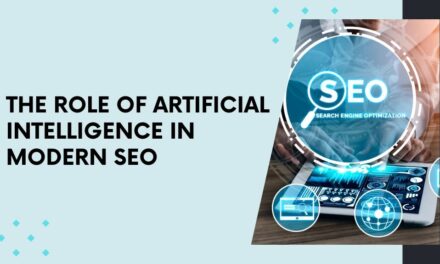Link building has undergone massive changes over the past two decades and one of the biggest areas of change has been link building. In the early days of the internet, websites would compete for rankings by getting as many links as possible, regardless of quality. It was a manipulative game and gave rise to tactics that had nothing to do with relevance or trust. Over time, search engines adapted, penalizing spammy approaches and rewarding sites that earned real authority. This ongoing evolution has shaped how we think about visibility and credibility online.
Understanding link building history is key to anyone trying to get their head around modern search engine dynamics. The journey from spammy methods to trust and relevance shows how SEO has grown up. Today it’s all about sustainable SEO and ethical backlinks that enhance user experience not exploit loopholes. By looking at the history of link building we can create strategies that will stand the test of time and continue to deliver in an ever changing algorithm and user landscape.
The Early Days of Link Building
When search engines first emerged links were treated like votes of confidence. Websites quickly realised that the more links they could get the higher they would rank. This led to a wave of dodgy practices, from link farms to reciprocal linking schemes where sites would link to each other regardless of relevance. The early days of link building were all about quantity not quality, with no thought to whether the links added value to the user.
These early strategies worked but were unsustainable and open to abuse. Search engines soon caught on, realising that manipulation was undermining their platform. Algorithms began to change, focusing not just on the number of links but the quality and context of them. This was the start of the shift towards sustainable SEO where long term success required more than just aggressive link building. The lessons from this period show us to move away from shortcuts and towards building authority through relevance and trust.
The Rise and Fall of Spammy Tactics
As competition grew, some marketers doubled down on manipulative methods. Paid links, hidden text and mass directory submissions became common with no regard for authenticity. Entire industries sprang up around artificial link generation and a distorted ecosystem. This chapter of link building history is often remembered for short term gains followed by long term damage. While these tactics could get a site up fast, they came with the risk of severe penalties when discovered.
Search engines responded by refining their algorithms to detect manipulation. Updates like Google’s Penguin wiped out the impact of spammy tactics, punishing sites that relied on low quality links. This forced businesses to rethink their approach and realize that ethical backlinks were not optional but necessary for survival. The crackdown on spam showed that SEO was becoming a discipline where credibility mattered more than shortcuts. It also showed the shift towards sustainable SEO where strategies built on trust and authenticity were rewarded.
The Role of Content in Shaping Link Building
As search engines got better at evaluating quality, content became the backbone of link building. Instead of chasing links through manipulative means, businesses started to focus on creating valuable resources that naturally attracted attention. Articles, research reports, guides and visual assets became tools to generate ethical backlinks by offering real value to users. This was a big turning point in link building history where the emphasis shifted from mechanical tactics to creative and strategic thinking.
The connection between content and sustainable SEO is clear. High quality content doesn’t just attract links, it builds authority, drives engagement and supports long term visibility. When sites produce content that informs, educates or entertains, they are more likely to be cited by others in their industry. This organic form of link building is the spirit of ethical practice, proving that relevance and value are the true drivers of authority in the digital space. The lesson is simple: strong content is the foundation of long term success in SEO.
Google’s Crackdown and Algorithm Evolution
Google’s algorithm updates changed the game for link building. The Penguin update targeted sites that used manipulative link practices and forced businesses to ditch the spammy tactics. This was a new era for link building where credibility and transparency trumped quick fixes. Sites that invested in SEO benefited from these changes and those that stuck to old school methods saw huge drops in rankings.
Algorithms continue to raise the bar for ethical backlinks. Today search engines don’t just look at the presence of links but the context, relevance and placement within content. A link from a trusted source is worth far more than dozens of unrelated or low quality links. For marketers this means prioritising relationships, outreach and long term value creation. By aligning your strategy with search engine priorities you can ensure your link building efforts will continue to work for years to come.
Outreach and Relationship Building
One of the biggest changes in modern link building is the emphasis on outreach and relationship building. Instead of buying or trading links marketers now focus on connecting with industry peers, influencers and publishers to earn ethical backlinks through collaboration. Guest posting, interviews and partnerships are the new ways to build authority in a real way. This aligns with the principles of sustainable SEO where long term results depend on authenticity.
The history of this shift shows the maturity of the industry. In the early days of link building relationships were transactional and shallow. Today they are seen as essential to building trust and credibility in a niche. Successful outreach is not about spamming hundreds of sites with requests but about offering real value. Businesses that invest in authentic connections not only get high quality links but also increase their visibility, reputation and influence in a meaningful way.
The Emergence of Digital PR
Another key development has been the integration of digital public relations into SEO strategies. By combining PR techniques with link building, businesses can attract attention from reputable publications and media outlets. This evolution in link building history reflects a shift from isolated SEO tactics to more holistic strategies that consider brand image and reputation. Digital PR campaigns often generate ethical backlinks by promoting stories, data, or insights that journalists and industry voices find valuable.
This approach is deeply aligned with sustainable SEO, as it builds credibility that extends beyond search rankings. Links earned through PR efforts often come from highly trusted domains, making them particularly powerful in improving visibility. At the same time, they enhance brand authority by placing businesses in front of broader audiences. The combination of PR and SEO demonstrates that link building has grown into a sophisticated discipline that rewards creativity, credibility, and long-term thinking.
Sustainable SEO and the Modern Landscape
In today’s environment, sustainable SEO is the standard by which all link building strategies are measured. Gone are the days when shortcuts and spam could guarantee results. Instead, search engines reward authenticity, relevance, and user value. Modern marketers focus on creating content ecosystems, building relationships, and earning ethical backlinks that stand up to scrutiny. This reflects the maturity of link building history, where lessons from the past have shaped smarter, more resilient practices.
Sustainability also means understanding that SEO is not a one-time effort but a continuous process. Businesses must adapt to algorithm updates, shifting consumer behavior, and changing industry trends. By investing in sustainable SEO, companies ensure that their strategies remain effective in the long run. Ethical, content-driven link building is not just safer but also more rewarding, creating systems that grow authority naturally while avoiding the pitfalls of outdated tactics.
Ethical Backlinks and Their Lasting Value
The concept of ethical backlinks captures the essence of how link building has evolved. These are links earned by providing genuine value rather than manipulating systems. They come from trusted sources, reflect relevance, and contribute positively to the user experience. In the context of link building history, they represent the opposite of spammy tactics, embodying the principles of transparency and integrity.
Ethical backlinks are central to sustainable SEO, as they provide stability even in the face of algorithm changes. When links are earned rather than manufactured, they are less likely to be penalized and more likely to continue delivering authority. For businesses, this means building long-term resilience and ensuring that their digital presence reflects credibility. By focusing on earning links the right way, companies create not just rankings but reputations that endure in a competitive online environment.
Looking Ahead: The Future of Link Building
The future of link building will continue to emphasize authenticity, quality, and user-focused strategies. As search engines become more advanced, the value of ethical backlinks will only increase. Businesses will need to invest in creating content that resonates deeply, forming relationships that expand their influence, and aligning with broader principles of sustainable SEO. The mistakes of the past remain instructive, reminding us that manipulative tactics never last.
Emerging technologies such as AI will shape new opportunities, but the fundamentals will remain grounded in trust and relevance. For those studying link building history, the progression is clear: from spammy beginnings to a discipline defined by responsibility and value. The businesses that succeed will be those that embrace this evolution and commit to building authority through genuine, user-centered strategies. Link building, once a game of numbers, has become a craft of quality, ethics, and sustainability.

The Human Element in Link Building
While algorithms and strategies often dominate discussions about SEO, the human element has always been central to building links. In the early stages of link building history, many efforts were mechanical and designed to trick search engines rather than serve readers. Over time, however, businesses realized that lasting value comes from connecting with real people. Editors, bloggers, and journalists provide ethical backlinks when they believe content has genuine merit. These relationships cannot be faked or purchased in bulk but must be cultivated with care and respect.
The shift toward sustainable SEO underscores the importance of trust between people. When a business provides insights, data, or resources that genuinely help others, those contributions are rewarded with links that carry authority. This human-driven approach highlights why authenticity matters more than scale. By focusing on audiences instead of algorithms, companies can earn connections that endure. The human side of link building ensures that SEO does not remain a purely technical exercise but reflects the value of relationships and reputation in the digital space.
The Risks of Ignoring Ethical Practices
Even with all the changes, some businesses still attempt to rely on shortcuts for faster results. History shows, however, that these methods rarely last. Sites that ignore the importance of ethical backlinks and choose spammy techniques risk heavy penalties when algorithms evolve. This lesson has been repeated throughout link building history, where short-term gains often collapsed into long-term losses once search engines caught up. Ignoring ethics in link building is not just risky; it is unsustainable.
Sustainable SEO depends on strategies that align with user needs and search engine guidelines. When businesses invest in shady practices such as buying low-quality links or using automated schemes, they compromise trust and jeopardize their reputation. Customers and partners also view unethical practices as a red flag, which can harm credibility beyond search rankings. In contrast, focusing on transparency and authenticity ensures resilience. The risks of ignoring ethical standards highlight why responsible link building is now considered a non-negotiable part of long-term digital strategy.
Measuring the Impact of Link Building
To truly understand the value of modern SEO, businesses must measure the impact of their link building efforts. In the early days of link building history, success was defined by the sheer number of links acquired. Today, measurement is far more nuanced, focusing on relevance, authority, and long-term benefits. Tracking the performance of ethical backlinks involves assessing not just rankings but also referral traffic, engagement, and conversions.
From the perspective of sustainable SEO, the quality of a single high-authority link often outweighs dozens of low-quality ones. Businesses must therefore monitor which links deliver meaningful results and which provide little value. Tools that analyze domain authority, topical relevance, and link placement can guide ongoing strategies. Measuring impact also helps justify investments in outreach, content creation, and digital PR. By focusing on data-driven insights, businesses ensure that link building supports their broader objectives and remains aligned with ethical, sustainable practices.
Integrating Link Building with Broader Marketing
Link building is no longer an isolated activity but part of a larger digital marketing ecosystem. Modern strategies weave together content marketing, social media, public relations, and influencer partnerships to generate ethical backlinks. This integrated approach reflects how far practices have come in link building history, moving from spammy tactics to holistic methods that strengthen both visibility and brand reputation.
For businesses, integrating link building with broader marketing ensures greater consistency and impact. A campaign that combines storytelling, multimedia assets, and targeted outreach naturally attracts attention and earns links in ways that feel organic. This alignment also supports sustainable SEO, as each part of the marketing mix reinforces the others. By embedding link building into wider strategies, companies avoid treating it as a one-off task and instead see it as a continuous process tied to reputation, engagement, and growth. The result is a resilient online presence built on trust and lasting relationships.
Conclusion
The evolution of link building mirrors the growth of SEO from manipulative, numbers-driven tactics to strategies centered on trust, authority, and authenticity. Early shortcuts revealed risks, while patient and ethical approaches proved more sustainable. Today, link building emphasizes credibility, user relationships, and alignment with search engine standards. Modern practices prioritize security and trust, making visibility inseparable from reputation. By learning from past mistakes and embracing ethical backlinks, businesses can foster community, strengthen brand credibility, and achieve long-term growth. Sustainable link building is no longer just about rankings but about creating respected, lasting digital success built on integrity and genuine connections.












